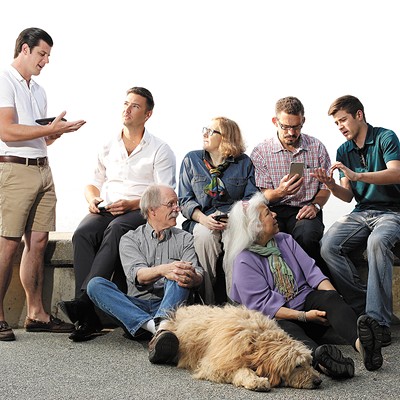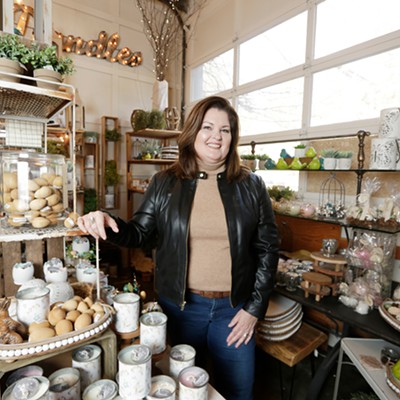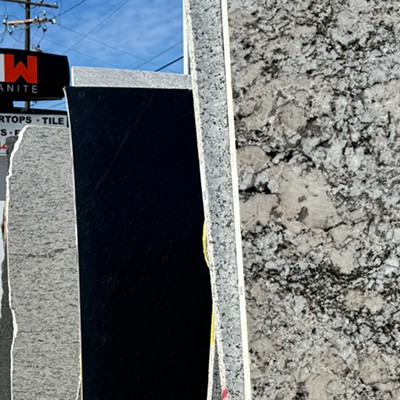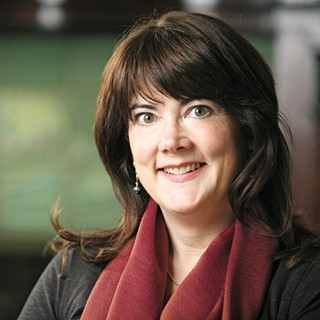A health crisis can feel like a slowly unfolding nightmare. Health care providers can be frustrating to reach, formulating the right questions can be difficult and the answers can get lost in a haze of emotion and fear.
"My family was falling apart," says Osha Semple, now 31, from her home in New Orleans. "My mom's crying, my dad's cussing on the phone," she recalls. Months earlier, Semple had been visiting her family in Coeur d'Alene when a flare-up of a chronic disease stranded her far from her own home. She endured a lengthy hospitalization, multiple surgeries and then a stint in a nursing home. When an infection set in, she was headed back to the ICU and faced additional surgery. "We were all feeling really overwhelmed, like there was nobody in our corner," she says.
A family friend urged them to contact patient advocate Amy Simmons, who owns Wayfinders, the first independent patient advocate service in the Inland Northwest.
In 2010, patient advocacy was named a "career of the next decade" by Kiplinger's Personal Finance magazine. "The goal of patient advocacy is to remove barriers to care by giving patients more choice and control in their health care decisions," says Io Dolka, the executive director of Washington State Health Advocates Association. The profession has many facets — from helping educate patients and their families about a medical condition, to coordinating care and preventing unnecessary duplication of diagnostic procedures, to researching the options for therapies and second opinions, to dealing with financial concerns, perhaps through auditing itemized bills and comparing them with medical records.
Whatever form advocacy takes, Simmons sees her role as empowering her clients to take charge of their own health care. Most of them have a chronic disease or are going through a major medical crisis. "They feel like they're up against a wall. They're so sick and so discouraged they don't know what to do," she says.
After a consult with a potential client, Simmons helps figure out what the immediate goal is. "Then we gather information. If we need medical records gathered from different facilities, that would be something I would do. We can identify their support systems, figure out who they want in their process. If they have a sibling or a parent or a child across the country that they want involved, we can set that up. Then we plan for steps to get us toward the goal, whether preparing for a doctor visit, or researching a disease or therapies," says Simmons.
An advocate can help a client prepare for a doctor visit — prioritizing questions to make the best use of the allotted time, as well as accompanying the client to the visit and taking notes. Gathering peer-reviewed pertinent research, finding sources for second opinions, and deciphering the content of a patient's medical records are all within an advocate's purview.
What advocates won't do is tell a client what to do.
"That is in our code of conduct. We do not make medical decisions," says Simmons. "We give options. We give maybe more options than what you knew were there. There is supposed to be an emphasis now on shared decision-making in patient care. We facilitate that," she says, noting that she has yet to encounter resistance to her presence from a local provider. "I don't have an affiliation with any facility or provider. I can go with you anywhere you want. I don't work for anybody else except for the patient," she adds.
Right now, there's no official accreditation for advocates. Simmons has 16 years of experience as a radiology technician, as well as a bachelor's degree in radiologic sciences. She also received a certificate from the Harold P. Freeman Patient Navigation Institute's patient advocacy program. But researching an advocate's background and credentials is currently a patient's job.
Another issue for patients is paying for the advocate. Insurance does not cover advocacy; Simmons negotiates a fee schedule with her clients. Dolka says that in addition to working toward national accreditation standards for advocates, the association is pushing for insurance reimbursement at some point in the future. "We strongly believe advocacy services are a health care delivery innovation with potentially big returns for health care systems and health plans," she says.
As for Semple, she has mostly recovered from her illness. Ultimately, she asked Simmons to research getting a second opinion on her condition before she committed to another surgery. The second opinion led to new options and a relatively speedy recovery. But the extended time away came at the cost of her job working with troubled teenagers, and she is now trying to find a new one. Looking back on her illness, she says, "I have to advocate for my kids all the time. I'm a pretty strong person, but when you're so sick, you are put in this position where you're kind of an island unto yourself." Hiring an advocate "was the first step in me finding my voice and my empowerment, and realizing I am paying them, and this is my life. She was the person that helped me organize that, and feel like 'You can do this.'" ♦
To learn more, read You Bet Your Life! The Ten Mistakes Every Patient Makes by Trisha Torrey. For a directory of health advocates: advoconnection.com

























